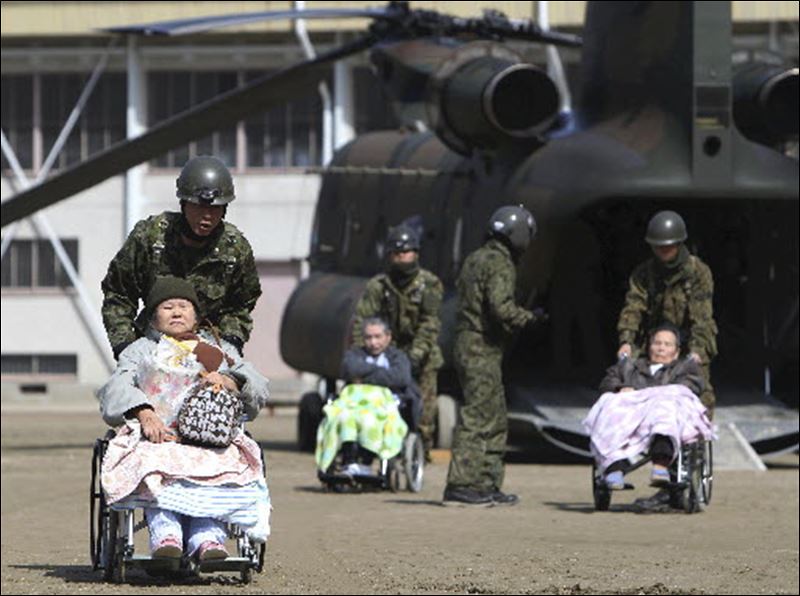26 February 2016 (03:11 UTC-07 Tango 01) 07 Esfand 1394/17 Jumada al-Ula 1437/19 Geng Yin 4714
Three former executives of TEPCo are finally going to face trial over the 2011 nuclear melt downs and resulting explosions at Fukushima Daiichi in 2011. They are charged with professional negligence resulting in deaths and injuries. Prosecutors accuse the former executives of knowingly ignoring procedures for handling nuclear emergencies.  The deaths include numerous patients evacuated from the nearby Futaba Kosei hospital.
The deaths include numerous patients evacuated from the nearby Futaba Kosei hospital.
Despite the criminal charges, Tokyo Electric Power Company (TEPCo) continues to amaze at its level of seeming ignorance concerning the never ending melt downs at Fukushima Daiichi.

Five years later the basements of the reactor buildings are still flooding with contaminated water, and TEPCo adminstrators announced yet another plan to stop the flooding. In the meantime TEPCo has been pumping the radioactive water into the Pacific Ocean (of course they claim they filter it down to ‘safe’ levels). By the way, the new plan to stop the flooding the basements is expected take four years to complete!

On top of that TEPCo will begin incinerating accumulated mixed nuclear waste. Japan has no official nuclear waster storage and the Fukushima Daiichi property is piling up with nuclear waste. Interestingly news reports say that reducing the mixed waste (clothing, tools, etc) to ash will actually increase the concentration of radiation by volume. TEPCo wants to burn 14 tonnes per day.
The incinerators were in use before the 2011 disasters, it took TEPCo five years to get them up and running again (maybe, they still have to test fire them), the reason is the same reason TEPCo has given for almost all their problems dealing with the melt downs; unexplained contaminated water leaks.
Now, if you work at Fukushima Daiichi would you trust what your supervisor tells you? Workers are now being told they don’t have to wear protective clothing while working on certain areas of the nuclear plant’s grounds.
TEPCo administrators say it’s because they’ve completed removing contaminated topsoil from a large area of the complex. They claim radiation levels in those areas are low enough that protective clothing is not required, but workers can still wear them if they want to (good idea).

The ongoing nuke disaster is blamed for an exodus of 115-thousand residents, the largest population drop of all the prefectures.